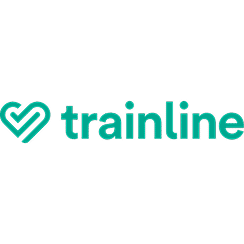Posted on: 21.05.2020
The long road back to somewhere we have never been
Since the onset of the Coronavirus pandemic and the introduction of lockdown, the majority of conversations I’ve had have centred around ‘the route back’ – when it might happen and what it could look like. Below is my two-pennies worth on the topic.
It has become clear that whilst shutting down offices was a considerable adjustment for all, opening back up is to prove infinitely more complex. During a conversation in late April, a global consultancy leader remarked that ‘shutting the office down was all things considered very simple but re-opening it is a dauntingly complicated minefield’.
With government advice ever-evolving, – some might argue, changing – setting a concrete strategy for return is, in the words of a financial service’s senior leader ‘a bit like trying to pin the tail on the donkey’. Even if you were to approach your business in a vacuum, the sheer scale of data and moving parts to be factored in is mind-boggling.
When lockdowns came into effect, most industries simply had no choice but to shut down and have everyone work from home, so the long-term reputational downside of doing so was zero. Conversely, leaders are all too aware that the way businesses approach reopening will invariably be a key metric for how well they are deemed to have responded to coronavirus on the whole. Whether that be in the minds of employees, customers, partners, competitors, or just the general public.
A senior capital markets professional remarked that ‘how firms approach re-opening is an MBA case study in the making’. Whilst the comment was meant somewhat tongue-in-cheek, he is probably right.
Waiting for someone to blink first
Although most firms will have business continuity and crisis response plans, the truth is that no-one has had to formulate a ‘return to work strategy’ following a shutdown on this scale, due to a global pandemic before. So, we should all be excused for not having a ready to go ‘here is one I prepared earlier’ plan. That being said, there is no overarching best practice to draw from at this stage so let’s start with focusing on producing sense lead, scientifically-backed, and considerate good practice.
The new bottom-line is safety first
Whilst returning to offices will allow businesses to take steps towards a semblance of normality – and financial recovery – we cannot ignore that the key priority for all at this juncture is safety. Safety of families, safety of employees, safety of colleagues and safety of customers.
Having such a visceral imperative as prime consideration is clearly daunting but let’s take a step back. The key to a successful strategy is a well-defined purpose. Having such a clear primary consideration is advantageous as it provides a valuable feedback loop of sorts by which the validity of each measure can be evaluated and assessed.
Top-down clarity but bottom-up initiatives
Before launching into devising a strategy to return, do you actually know if your staff want to, do they feel it is safe to do so, and if so, do they understand and buy-in to the logic of doing so?
Businesses could very well spend weeks devising a return strategy for their employees only to find out that a large percentage of staff do not feel it is safe to return to the office, let alone see the value in doing so quite so soon. The latter point is likely to be exacerbated by front and centre businesses like Google and Facebook extending their work from home until 2021 and Twitter, saying staff can work from home ‘forever’.
Employee engagement and feedback should provide the backbone data to formulating any plan, as each individual will have different considerations, priorities and concerns. As such, businesses must be prepared to offer multiple strategies tailored to individual circumstances.
Tailored will always deliver the best fit
A senior leader at a global business pointed out that in all likelihood, her leaving lockdown and going back to the office would mean she could not then visit her elderly father in his care home, given the strict conditions rightfully imposed on visitors to keep the residents safe.
In the same vein, consider this. The average Londoner’s commute is around 75 minutes a day, or roughly 35-40 minutes each way, and uses at least two different links or lines. In 2018 ‘BC’ (before corona) a study showed that two-thirds of Londoners found using public transport the most stressful part of living and working in the capital. Add to that an almost certain capacity cap on tubes, trains and buses to avoid overcrowding, it is no surprise that Covid-19 has sent ‘commute stress’ into over-drive, excuse the pun.
The government has made considerable noise in the past week or two encouraging where possible those who can walk or cycle into the office to do so. Furthermore, the Mayor of London has announced his intention to, at least temporally, repurpose the city’s roads to encourage cycling and walking. Any way you slice that, it is positive news but, given all the moving parts in relation to commuting, it is clear to see everyone will weight it all up differently.
It’s going to be a marathon, so go together
The question of ‘how to reopen’ is not a simple management issue. It is a legal issue, an HR issue, a finance issue, an IT issue and a facilities management issue. As such any thorough reopening strategy will require complete multidisciplinary cooperation.
Crucially, any plan will need to be regularly reviewed as the situation evolves and have clearly set out guidance that should an indicator, for example R or a proxy to R, rise above a certain level, containment measures can be rapidly activated.
Has the opportunity to define the future ever been so tangible
One of the main motivations highlighted for having people start to return to the office is to reintroduce a semblance of normality. Whilst I confess that, in the main, I am pro reopening offices – I find that notion of ‘normal’ hard to subscribe to. Even once back in the office very little, if anything, will be normal.
Whilst using Coronavirus as an external opportunity is reckless, evolving out of disruption is the basis of human progress. Accepting the fact that innumerable aspects of our working lives will be changed forever, we must creatively redefine our business strategy for the future rather than repurpose it out of the past.
As a global HR leader astutely put it ‘going back to normal is exactly what it sounds like, it’s going backward’. Well said I reckon.


























 Career Enquiry
Career Enquiry
